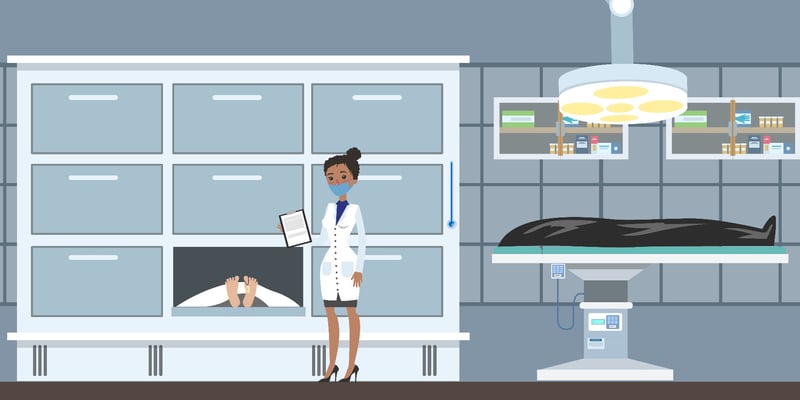Approximately half of Canadian medical schools have cut back on using cadavers, opting for pre-cut body parts and high-tech imaging technology, Canada’s Globe and Mail reported last month. On Friday, May 9, 2014, the ethical issue of using cadavers in Canada was discussed on a national radio program on the CBC. In January, the Economist.com ran an article about the growing global shortage of cadavers. Could American and Caribbean medical schools soon follow suit and limit the use of cadavers?
The UMHS Pulse looks at the Economist’s reasons for the growing demand of cadavers, why some Canadian medical schools are opting for alternatives to traditional cadavers such as high-tech mannequins and digital simulator/virtual cadavers, and what this means for medical education at American, Canadian and international medical schools.
Global Cadaver Shortage
The Economist.com listed the following reasons for the cadaver shortage in a January 14, 2014 article:
- “Growing demand is part of the problem. The number of medical students is increasing, as is the number of programs that use cadavers. Certified doctors need bodies too, in order to continue their training. Researchers and pharmaceutical companies use bodies to develop new procedures and treatments. Organs also go to clinics and hospitals for transplants.”
- “Supply, meanwhile, has not kept up. Improved means of communication have meant fewer unclaimed bodies, which is one source of cadavers. Statistics on body donations—the other main source—are spotty, but the giving appears inconsistent and in many countries, it is still taboo.”
- “Complicating matters is the fact that only certain bodies are fit enough for medical study. A good cadaver is generally young, fully intact and not too obese or riddled with disease. It is perhaps not surprising that the supply of such bodies is limited.”
- “Alternatives are being considered. High-tech mannequins, computer software and digital simulators are used at some medical schools. But students say nothing beats the real thing. One solution would be to pay for cadavers. In most countries with medical schools, this is illegal, but there are still market forces at work. For example, schools will often pay for the cremation or burial of a body. At least one study has shown a correlated increase in donations to those institutions.”
- “There is also a growing number of companies that match body donors with recipients. These firms are paid for services like removal, preservation and transportation of a body. Michel Anteby, a professor at Harvard Business School, calls it ‘ market for human cadavers in all but name’.”
For more information, visit http://www.economist.com/blogs/economist-explains/2014/01/economist-explains-10
Canada's Controversial Cadaver Debate
The Globe and Mail article included the following facts about cadavers in Canadian medical schools.
- “About half of Canada’s medical schools have already traded complete dissections for a combination of pre-cut body parts and new imaging technologies that offer a faster route to teaching basic anatomy. Speed is of the essence because, as medical knowledge expands, some schools are finding it difficult to squeeze a complete dissection into undergraduates’ jam-packed schedules.”
- “The University of Saskatchewan’s College of Medicine decided earlier this year to phase out full dissections from the core curriculum for undergraduates, a move the school made as it prepares to build a new $3.85-million human structures laboratory that is expected to open in 2016 or 2017. Dissections will still be offered as an elective or clerkship.”
- “But proponents of mandatory dissections, including Dr. Rosser, the head of anatomy and cell biology at the U of S, say medical students will miss out on something fundamental if they are not required to wield their own scalpels on their own cadavers.”
- “It’s like the difference between watching somebody show you how to drive a car,” Dr. Rosser said, “and actually driving it.”
- “There is no accreditation requirement for active dissections at Canadian medical schools.”
- The Globe and Mail quoted Nick Ovsenek, associate dean of biomedical sciences and graduate studies at the U of S and author of the report that recommended doing away with mandatory dissections, as saying "research on the best way to teach anatomy is mixed."
- Dr. Rosser disagreed and said full dissections “remained a gold standard for teaching anatomy.”
For more information, visit http://www.theglobeandmail.com/life/health-and-fitness/health/dissection-debate-why-are-medical-schools-cutting-back-on-cadavers/article18296300/
Listen to the CBC’s discussion on cadavers in Canadian medical schools at http://www.cbc.ca/player/Radio/Local+Shows/Ontario/Morning+North/ID/2455350407/
(Top image) Illustration by Deposit Photos
About UMHS:
Built in the tradition of the best US universities, the University of Medicine and Health Sciencesfocuses on individual student attention, maintaining small class sizes and recruiting high-quality faculty. We call this unique approach, “personalized medical education,” and it’s what has led to our unprecedented 96% student retention rate, and outstanding residency placements across the US and Canada. UMHS is challenging everything you thought you knew about Caribbean medical schools.

Scott is Director of Digital Content & Alumni Communications Liaison at UMHS and editor of the UMHS Endeavour blog. When he's not writing about UMHS students, faculty, events, public health, alumni and UMHS research, he writes and edits Broadway theater reviews for a website he publishes in New York City, StageZine.com.
















